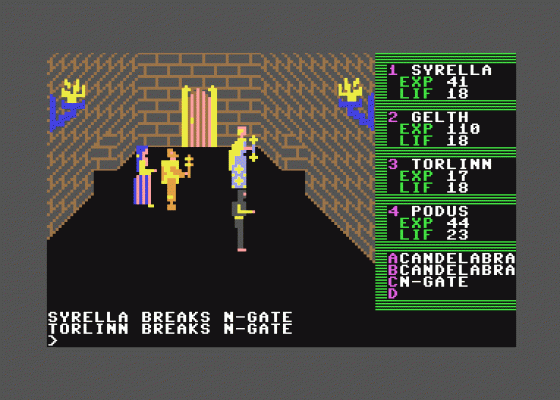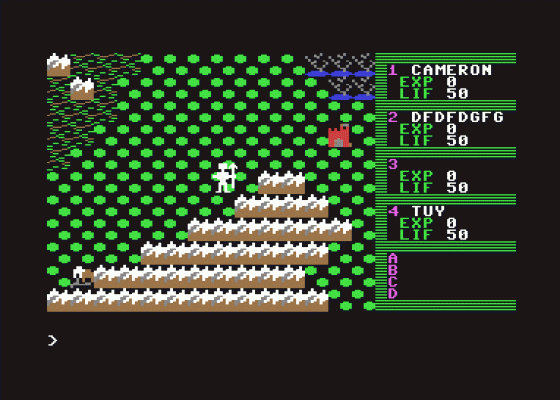
C&VG
 1st October 1986
1st October 1986
Mandragore
So this is the great French adventure from the biggest software company in Europe (the French Connection, C&VG August 86). It is more like D&D, and Phantasie than a true adventure.
Unless you settle for the bunch of characters already provided, you start off by building four of your own characters. You assign their attributes up to a total of 80 points each.
Pressing any key winds the points up for an attribute until RETURN is pressed, when it is entered. Then the next on the list takes its turn.

If at any time you exceed the points remaining available, instead of an error message with the facility to edit your previous entries, the whole lot is blanked out, and you have to start in again.
Name, race, occupation and sex ("yes please" is not accepted!) are then entered, and here is an inconsistency. You type in your name in the normal way. But next, race is required, and the screen does not react unless you hit the initial letter of one of the races in the game, at which time, the whole word is displayed.
Once your four characters are created, off you go to the map of Mandragore, about which you can traverse by use of the N, S, E and W keys. This action is quite smooth and effective.

Then comes the thrilling bit! When you come across one, you can enter a chateau!
You can command a member of your party to do something. The characters, each assigned a number one to four, are listed down the right hand side of the screen, together with experience and life points. At the bottom is a box with lines A-D, and if any objects are present in the room, they will be shown here.
To save typing, or, more likely, to save providing a parser or icon-driven command system, the commands go like this: Character number (to be commanded), verb, object letter. The verb list is provided in the instructions, and the first one or two letters of the verb are typed. The whole word is then displayed in the input area, at the bottom of the screen.
So, "Supremo attack Tickel" is entered thus: 1 AT B, for example. The picture of Supremo then flies alarmingly about the screen in the general vicinity of Tickel, for a moment or two.
It is said that there is a problem in each of the nine chateaux. I was lucky, I played a disk version on the Commodore 64. Each chateau must be loaded separately. On disk, this is almost transparent to the player. But on tape, the correct position for the appropriate chateau must first be found, and the instructions recommend that before starting to use the game, you run through the cassette, noting the tape counter positions.
A more clumsy way to load (from tape) and enter commands, I haven't seen in a long time!
The graphics aren't bad, but there seems little depth in the game itself.



